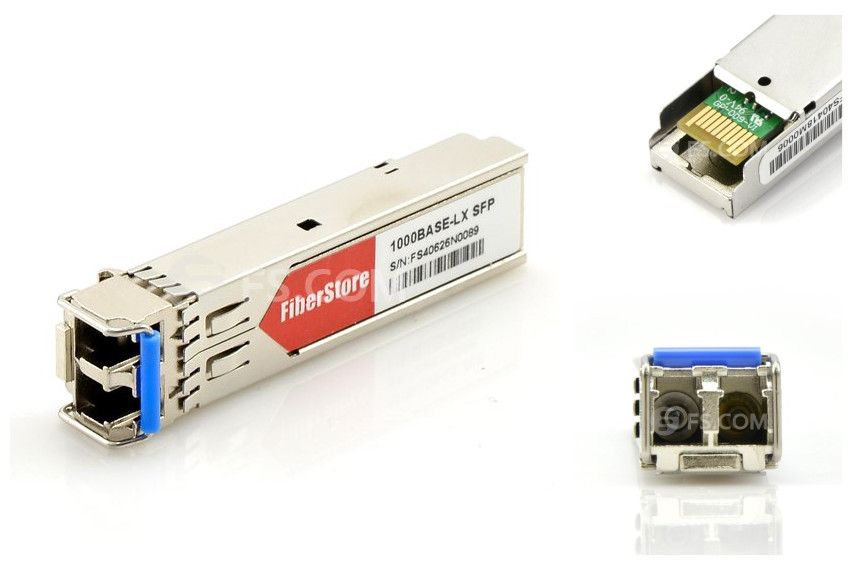Things to Know About "Hot-swappable" Optical Transceivers
You will come across words like "hot-swappable" or "hot-pluggable", when reading specifications of an SFP transceiver, such as Allied Telesis AT-SPSX compatible 1000BASE-SX SFP transceiver. What is the meaning of "hot-swappable" or "hot-pluggable"? Why does an SFP transceiver have a specification like this? In the optics market, many optical transceivers are now with "hot-swappable" function or "hot-pluggable" function. What this "hot-swappable" function is used for? Many people may generally consider it just a function that will help them save money or make their work more convenient. In fact, there are several things you need to learn about hot-swappable function of optical transceiver modules.
Hot-swappable optical transceiver module, is an optica component with a function that can support inserting or pulling out the module without shutting down the system or without significant interruption to the system or significant interruption to the operation of the system. "Hot-swappable" function can help us to avoid complete redesigns and cutdown the exorbitant costs associated with the practice, e.g. system updating. Now, optical transceiver modules, such as SFP (small form-factor pluggable), SFP+ (small form-factor pluggable plus), and 40G QSFP (quad small form-factor pluggable) are all hot-swappable transceivers. The following picture shows an HP J4859C compatible 1000BASE-LX hot-swappable SFP transceiver.

Optical transceiver module is an important and indispensable component in an optical transmission system. If we used a "non-hot-swappable" optical transceiver for management or upgrading of a network, we should power down or shut down the system until we finish the pluggable process. However, if cutting power of telecommunication and data transmission systems for a long time, there will be a great loss. In addition, the restart time of some operation systems is long, which will also lead to a big loss. This is why it is so important to find devices that are hot-swappable. Nowadays, hot-swappable technologies have been widely used in data communication and transmission industries and become more and more important.
Before adding the "hot-swappable" function to optical transceiver modules, several problems must be solved to ensure that those optical transceivers can function well. First, safety of the laser should be guaranteed. Laser is the most important and expensive part of an optical transceiver module. It is easy to be damaged and vulnerable to static electricity damage as it is a static sensitive component. Besides, surge current and system bus should be taken into consideration to avoid damage to components of optical transceivers and interference to data transmission.
To solve those problems, a few technologies are used to ensure safety and feasibility of hot-swappable optical transceiver modules. MSA (Multi-source Agreement) defines the use of TX fault (transmitter fault) to indicate whether an optical transceiver module can work in good condition or not. When inserting an optical transceiver, there is an initializing program. The optical transceiver will begin to test by itself after the power is on. If the self test is approved, it will dirve the IC (integrated circuit) to offer current to the laser, and then the laser works. Otherwise, it will not offer current to the laser. In addition, adding a shutdown pin to the circuit which can close the LD (laser diode) when failure occurs is also a solution to ensure the saftey of the laser. Meanwhile, to reduce the surge current, you can use a specific sequence of power. Moreover, you can also add a filter circuit as well as current limit switch to further reduce the surge current. Lastly, pull-up resistors and and precharge technologies are usually employed to reduce the interference of hot-swappable module on the system bus. These are also defined by the MSA.
The post explains why "hot-swappable" optical transceiver modules are becoming more and more popular with users. "Hot-swappable" function is of important value to an optical transceiver module. Optical transceiver modules with hot-swappable function can reduce expenditures for companies, especially when devices fail prematurely because you have to shut down the system completely to replace the device. "Hot-swappable" optical transceiver modules have more flexibility and functionality, which can help companies to save both money and time. In a word, hot-swappable optical transceiver module is a great choice.